
Photo by Christopher Jue/Getty Images for International Paralympic Committee
The Paralympic Games have always been more than just a sporting event, but the Tokyo edition may wind up being remembered more for the conditions it was held amid than the actual competition.
For the athletes, Tokyo was likely one of the strangest events they’ll ever be a part of, and one of the most stressful too. Unprecedented delays, uncertainty, a deadly global pandemic, economic turmoil and social unrest aren’t an ideal set of conditions to navigate as you train for the biggest sporting event of your life.
Yet, these Paralympics were every bit the breathtaking show they’ve been in years past. To find out how athletes pushed through the weirdness of Tokyo 2020 — finally held in 2021 — and still managed to put on a performance for the ages, we went straight to the source. Here’s a behind-the-scenes look at the Tokyo Paralympics, as told by five athletes who were there.
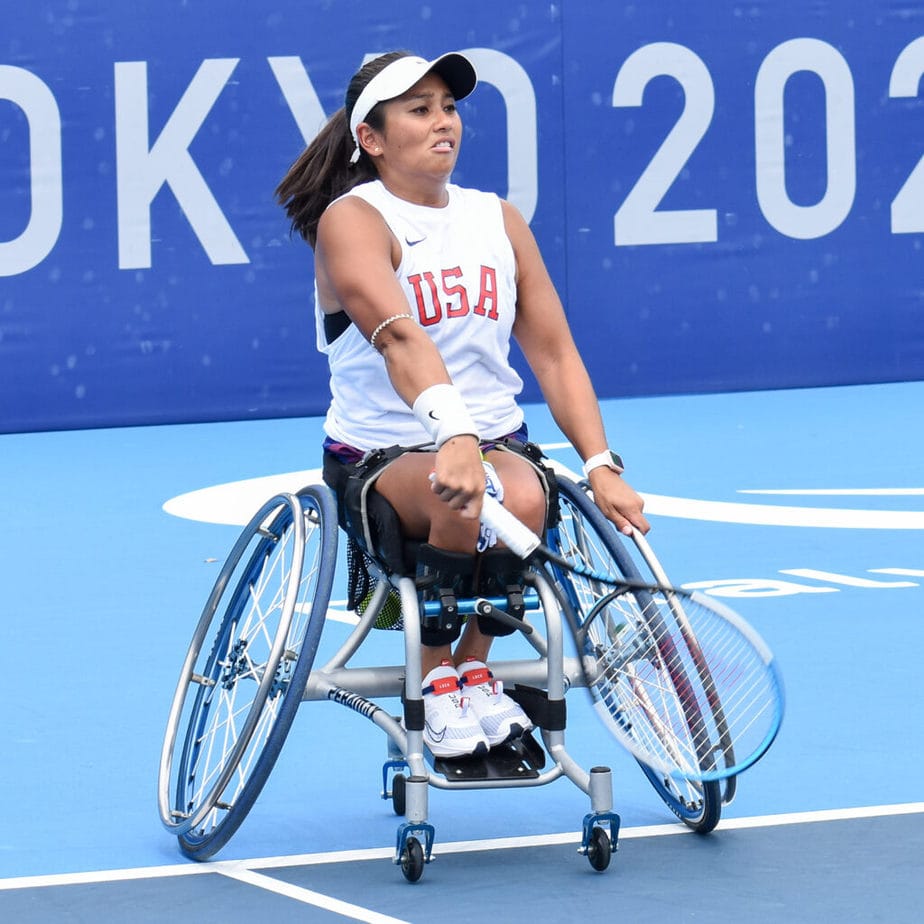
Shelby Baron
Sport: Wheelchair tennis Age: 27
Disability: Spina bifida
Hometown: Honolulu, Hawaii
Previous Paralympic Experience: Rio 2016
Tokyo Result: Round of 16 (singles), Quarterfinals (doubles)
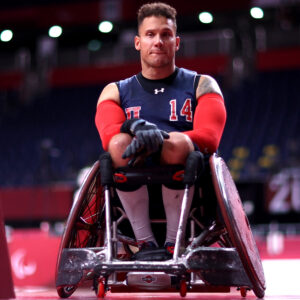
Joe Delagrave
Sport: Wheelchair rugby
Age: 36
Disability: C6-7 SCI
Hometown: Prairie du Chien, Wisconsin
Previous Paralympic
Experience: Bronze medal, London 2012
Tokyo Result: Silver medal
Photo by Alex Pantling/ Getty Images AsiaPac
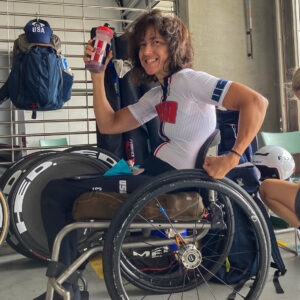
Alicia Dana
Sport: Handcycling
Age: 52
Disability: T9 SCI
Hometown: Putney, Vermont
Previous Paralympic Experience: London 2012; silver medal, Rio 2016
Tokyo Result: Bronze medal, road race; bronze medal, team relay; sixth place,
time trial
Photo by Casey Gibson/USOPC
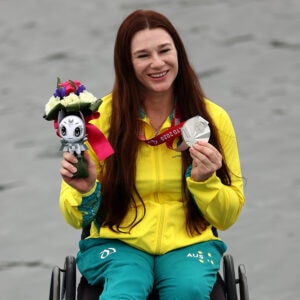
Susan Seipel
Sport: Canoe and kayak
Age: 35
Disability: Arthrogryposis multiplex
Hometown: Ipswich, Queensland, Australia
Previous Paralympic Experience: Bronze medal, Rio 2016
Tokyo Result: Silver medal,
canoe sprint; seventh place, kayak sprint
Photo by Dean Mouhtaropoulos/Getty Images
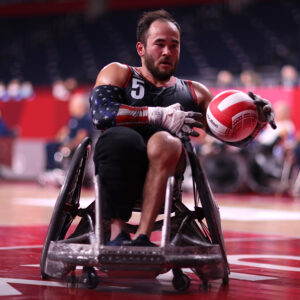
Chuck Aoli
Sport: Wheelchair rugby
Age: 30
Disability: Hereditary sensory and autonomic neuropathies, type II
Hometown: Minneapolis, Minnesota
Previous Paralympic Experience: Bronze medal, London 2012; silver medal, Rio 2016
Tokyo Result: Silver medal
Photo by Naomi Baker/Getty Images
Waiting for Tokyo
Shelby Baron: I was playing some of the worst tennis of my life when the pandemic hit. I graduated from college and put off working so I could train, but I really questioned what I wanted to do. I put a lot of stress on myself, and my game was suffering. In 2020, when the word came down from the U.S. Tennis Association that we had to stop playing because of COVID-19, it actually came at a really good time for me. I needed a mental break.
Joe Delagrave: When the Paralympics were delayed, I took a pause to figure out what it meant. It meant that instead of five months of training left, we’ve now got 17 months … oh crap. That was a big deal. I just had to let those emotions come through and feel them, and then go, “OK, let’s make a plan for what that looks like for me as an individual and for my family.”
Susan Seipel: Australia had extensive restrictions and many lockdowns leading up to the games. Fortunately, due to its solo nature, paddling was declared a low-risk outdoor activity, and I was able to take my Oru kayak out for exercise. While boat sheds were closed, the portability of the lightweight, folding kayak made it easy for me to throw it in my trunk and independently practice on any waterway when social gatherings were banned. It was great to maintain my fitness and keep a positive mindset, giving me a sense of freedom during the toughest lockdowns.
Delagrave: There was also the Team dynamic with wheelchair rugby. We had to figure out how to keep our chemistry and camaraderie together when we couldn’t be together for what ended up being 10 and a half months. Some of the guys were pretty isolated and alone. So, in addition to Zoom workouts and film sessions, we’d have some calls where we just had a beer or a drink or whatever and talked and hung out.
Baron: To stay sane, I got a little whiteboard and every evening I’d write out my schedule for the next day. Having little goals in my life helped me stay on track and productive. I went on walks with my coach, did workouts and got into cooking. With the time away from the court I focused on other things including my mental health. I started seeing a sports psychologist for the first time and once I got back on the court, I began to enjoy tennis again.
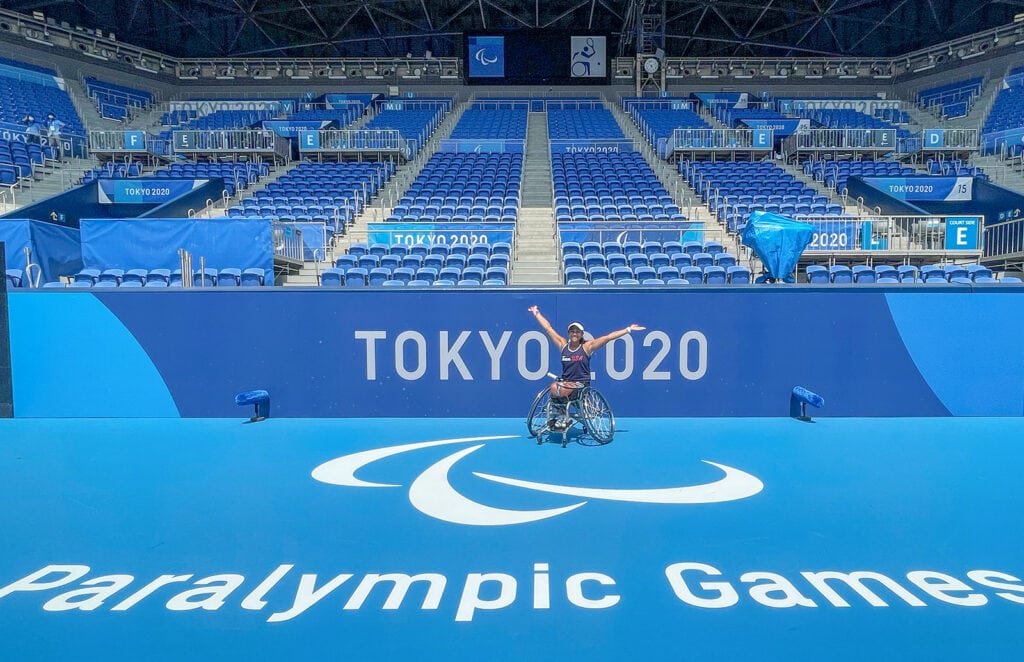
2021, Hopefully
Alicia Dana: At 52 years old, I had looked to these games as my final hurrah and was eager and determined to bring home gold in at least one of my races.
Recent developments in the Paralympic movement [see sidebar below, Big, Welcome Changes for the Paralympics] made me hang in there — the U.S. Olympic committee was now the U.S. Olympic & Paralympic Committee, and the pay scale for us Paralympic athletes had at last reached parity with our Olympic counterparts. As a single mother with no other significant source of income and my daughter nearing college age, this was a golden opportunity — pun intended — to provide some means for her education. Armed with over 10 years of experience in the sport, a record of success at the highest level, and the motivation and grit of an “older” Mama Bear, I was ready to get the job done.
Delagrave: When we started having training camps again in 2021, the biggest mental piece for me wasn’t the fear of getting sick or dying from COVID, as our team ended up being fully vaccinated, but just the fear of a positive or a false positive COVID test. You’re training your butt off, working toward a goal, and then day before the championship game or even at the airport you could test positive, and it would all be over.
Baron: I was not confident that the Paralympics were going to happen — not when I got the call that I qualified, and not even while the Olympics were going on. They canceled fans and kept saying worrisome things that made me think it was truly up in the air. Still, I made sure that I wasn’t going out with anybody because I needed to stay healthy and COVID-free.
Seipel: We needed three negative PCR tests taken 14 days, 72 hours, and 24 hours before our flight. For PCR testing, a health care worker took a nasopharyngeal swab, which is not the most pleasant procedure. We also had to limit movements two weeks before leaving to avoid becoming a community close-contact and were discouraged to check in at public places like shopping centers and restaurants. Sadly, there were no celebrations with friends and family before we left.
Delagrave: We have 12 guys on our roster and one coach who uses a chair. With competition chairs that equals 26 wheelchairs in total. Our home base, where we had our last training camp, is in Birmingham, Alabama. The first leg of our flight to Japan was on a small, regional jet from Birmingham to Chicago. Our competition chairs and wheel bags flew the day before to make room for all of us and our wheelchairs. It made for much easier logistics and alleviated some stress for the long day of travel to Tokyo.
Baron: Our team went to Florida to train before flying to Japan together. Even the plane ride was nerve-wracking. Our flight was pretty empty because there were no tourists, but we all stayed away from each other knowing that if one person tested positive on the plane we would have to quarantine at the airport. Other than that stress, it was a good flight — I had a whole row to myself. Once we stepped foot in the village after a long travel day, I let out a huge breath of relief.
Delagrave: We spent three hours going through COVID protocols upon arrival at Haneda Airport in Tokyo. It was a critical game of hurry up and wait. The last step was waiting for the test results to come back — the final hurdle to gain access to accreditation and a bus ride to the village. The Tokyo 2020 official came up and said we were all good to go except for one person whose test results were inconclusive. The lady said the four numbers that identified the player and we all looked to see if it was ours. Of course, it was mine, so we waited some more. It was terrifying, to say the least.
Fortunately, 45 minutes later we had good news: My second test came back negative. Away we went to the village.
Opening Ceremony
Chuck Aoki: We all knew the Tokyo Games would be different and that having no fans in the stands and arenas would lead to a quieter experience. But the process of preparing for the Opening Ceremony was still thrilling as we got fitted for our outfits — dressed up fancier than most of us had been in a long time — and rode the buses to the stadium. And we still felt the energy from our fellow Team USA athletes and the rest of the world.
This opening ceremony was extra special for me, as I was honored to be chosen as one of our two flagbearers, alongside Melissa Stockwell, to lead our delegation into the stadium. It is hard to express what an honor it was. Team USA has so many incredible athletes, and for them to choose me as one of our representatives is something I’ll never forget. I felt a surge of emotions as we headed down the tunnel into the stadium, accompanied by over a hundred of our athletes chanting “USA! USA! USA!” at full volume. It was the kind of moment you read about in books or see in movies, not something you live yourself. I can’t thank my fellow athletes enough for giving me this once-in-a-lifetime moment.
As we entered the stadium, a gigantic American flag was placed into my wheelchair’s specially designed flag holder — hint: it involved many zip ties. Melissa walked beside me as we proudly led our delegation. It was certainly different from the London or Rio Games, where tens of thousands of cheering fans greeted us. It was almost eerily quiet, given the size of the space. I couldn’t help but feel a little sad, as I do not doubt that in a non-pandemic world, a roaring, packed crowd would have welcomed us.
While the absence of stands overflowing with spectators hurt some, it was still a special moment.
Big, Welcome Changes for the Paralympic

Photo by Brian Bahr/Getty Images
Cheri Blauwet crosses the finish line and wins the gold during the 2004 Paralympic Games in Athens, Greece.
A sea change is surging through the U.S. Olympic & Paralympic Committee — and it brings welcome news for elite disabled athletes. One new development is that Paralympic medalists now receive the same amount of money for their achievements as Olympians. How did this come about? Will Paralympians now enjoy the same institutional support by the USOPC as their Olympic counterparts?
We talked with Dr. Cheri Blauwet, a legendary wheelchair racer who won numerous marathons in New York City, Boston and Los Angeles and who medaled in three Paralympics games, all between 2000-2008. Today she’s a sports doctor for Spaulding and Harvard Medical School and serves on the board of the USPOC.
NEW MOBILITY: We hear you have good news to share about the current direction of the Paralympics.
DR. CHERI BLAUWET: We’re in an era of very open-minded attitudes among the executive leadership and board of the USOPC. That’s made the difference in progress for the Paralympic movement in the U.S. Although there is still a lot of work to do, there’s now a better collective understanding that if we support the Paralympic movement, then all boats rise, to use that metaphor.
NM: Medal parity is an excellent example of a positive change by the USOPC. Previously a Paralympian gold medalist received $7,500 compared to an Olympian’s $37,500. But Paralympians in the 2020 Tokyo Games got the same amount of money for their medals as Olympians, and 2018’s Paralympic medalists received a retroactive payout. How did this come about?
CB: The Operation Gold program rewards medal payments to Paralympic and Olympic athletes, and there was a difference in the amounts for quite some time. After the 2016 Rio games, there was a percentage increase in the payments, however this created a further disparity. For example, picking numbers at random, say a Paralympian makes $1,000 per medal and an Olympian makes $2,500, and they each get 10% more. You’ve increased the percentage, but you’ve also widened the gap as the Paralympian would receive $100 more, but the Olympian would receive $250 more.
When that change was made, athletes rightfully started to speak up, and ultimately, the discussion made it to the board level. At the board, the discussion was very positive. It was clear that the ongoing disparity was not a tenable situation because not only was it unequitable, it also undermined athlete confidence in the movement.
Medal parity was unanimously approved by the board in September 2018.
I joined the USOPC board in 2017. As a Paralympian, it was meaningful to see that cultural change happen before my eyes. Medal parity transformed from a difficult to an easy conversation. It goes back to all those principles of change culture and creating relationships, as we had more Paralympians with a seat at the table. That’s also what led to the name change in 2019 when Paralympic was added to U.S. Olympic & Paralympic Committee. I thought there would be lots of resistance, but there was very little. It goes back to the idea of a tipping point — it reached that tipping point.
NM: Despite the positive changes that have occurred, there’s an enduring sense that our Paralympians don’t always receive the same resources and support as Olympians. How is this changing?
CB: Sports medicine, athlete safety, career mentoring — all those things should be equitable to all athletes. The sea change is that we added well-being to the USOPC mission, which is now “Empower Team USA Athletes to achieve sustained competitive excellence and well-being.” Our focus is still elite sports, but we do everything we can for those who become part of the elite system to enhance their performance while also protecting their well-being.
The resources accessed by Paralympians vary a lot from sport to sport and athlete to athlete. Part of that is because organizations that promote elite sports often use a funding model that inherently rewards good performance. If you have a well-performing sport, then more resources are allocated. The same thing is true on the Olympic side. The resources given to a sport like swimming — where we typically win many medals — are more than those given to athletes in a sport where medals are not typically won.
If you look at Paralympic resources, some areas like sports performance, high-performing training support, and direct funding to athletes, vary based on how the athlete and sport perform. But the well-being support and the core things needed to compete safely — such as sports medicine services — are equally afforded to all athletes once you reach the elite level, regardless of your podium potential.
NM: What are the barriers athletes face to reach that level?
CB: One challenge we have in the U.S. is our pipeline. In terms of athlete support, for the Olympics, the whole collegiate system exists. That’s much spottier for the Paralympics, although there are some phenomenal programs in places like the University of Illinois and the University of Arizona.
One of our biggest challenges is we don’t have that same National Collegiate Athletic Association infrastructure to support their journey to becoming elite. Paralympic athletes have to seek out their sport, then find where to train, practice and get the equipment. Often with nondisabled athletes, the sport finds them. You just join a team and give it a try. With Paralympics, you have to look around and ask, “What programs are in my area? How do I get the equipment?” It’s just a lot of work.
NM: Despite these lingering challenges, it sounds like the Paralympics are better supported and respected by the USOPC than ever before. There’s so much good news!
CB: It’s not like it happened overnight, but now the culture and attitudes are in the right place. Although there is a lot more work to do, it predicts very good things for the future. Now we’re growing together rather than the Paralympics being seen as an afterthought.
It’s a pleasure to be part of it, and there’s more to come!
Getting Into the Groove
Baron: Village life was different from what I experienced in Rio. When we weren’t playing or practicing, we basically went to the cafeteria and then back to our building. There was a resource center called “the ARC,” and an international center, where you could go shopping or get your nails done or haircut, but that was it.
Seipel: COVID restrictions for our team within the village included not being allowed to enter the dining hall or gym or other buildings (there was a canteen and gym in our accommodation building). We could not spectate at other sports due to crowd limits. We had to wear masks at all times and maintain social distancing. On top of that, the Australian team did not attend the opening or closing ceremonies.
Dana: I didn’t exactly hit the ground running. Jet lag, the interminable COVID processing through Narita airport, the worry over not having achieved an ideal upper body and head position or suitable hands-free hydration system on my handcycle, plus intense performance pressure, all combined to create few nights of decent sleep and resulting days of uncomfortable emotions.
Baron: Other than not being able to leave the village, the biggest difference was in Tokyo, we couldn’t go support our teammates in other sports. I watched so many sports I had never seen in Rio, and I missed that in Tokyo. Team USA athletes could watch different competitions at the ARC, but it wasn’t the same.
On the positive side, the lack of options helped me focus. It’s always good to just be able to isolate yourself from others to focus on your own preparation. At the same time there was more stress knowing that I needed to stay away from people. Every day, before eating or drinking anything, we had to submit a vial of spit for COVID testing.
Seipel: Despite all the limitations, I loved village life and there was a great vibe within the Australia Team. There were televisions placed around our building so we could support our teammates virtually. The village is like a community of diversity and acceptance. No one stares at a person eating using their feet or at mobility devices because it’s the majority. Everywhere is accessible and difference is normalized. It’s a wonderful place. I wish the real world was more like the Paralympic village.
Dana: The closer it got to race day, the more panicked I felt at not having my body and mind rested and tuned or my equipment 100% dialed. It began to feel like a race before the race — to reach a point of “finality” with my preparation, at which point I felt I could relax and focus entirely on the race. Fortunately, I got help from a teammate on my equipment issues and opened to two of my coaches about my mental stress and they were able to help me deal with it.
Now Live from Tokyo — the Paralympics
by Seth McBride
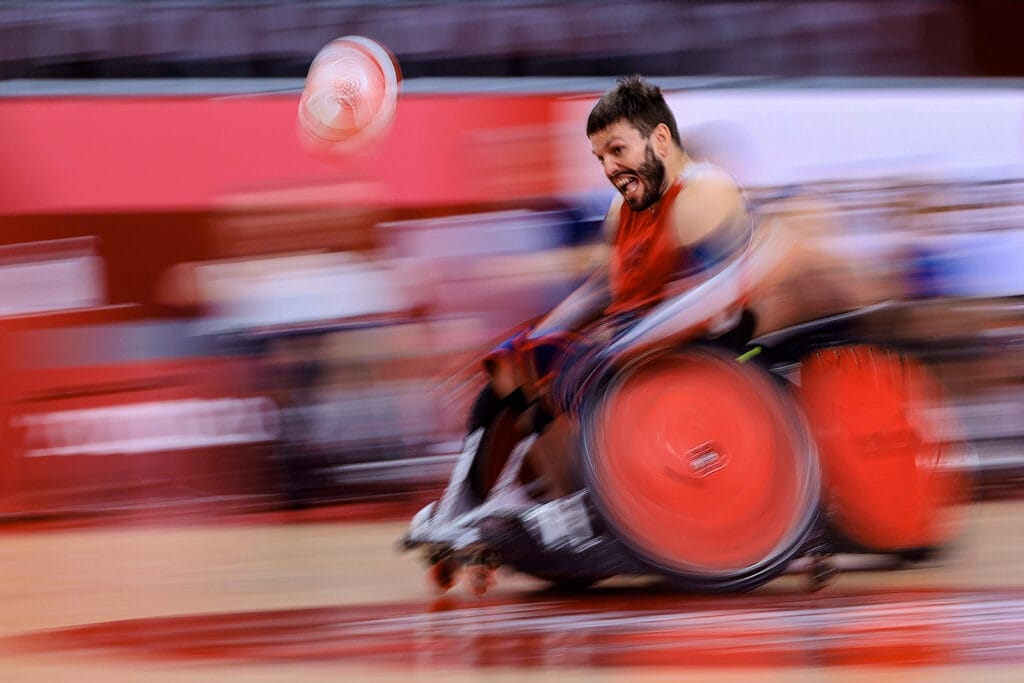
“Wheeler! Why are you reaching?!”
This was probably the most surreal moment of my Tokyo Paralympics television experience. Mark Zupan — a former Paralympic teammate of mine, a guy who among many others helped teach me the game of wheelchair rugby — was providing color commentary for the NBC television broadcast of wheelchair rugby, and he saw what I saw: U.S. athlete Josh Wheeler reaching for the ball late in the clock, getting called for a foul when, if he’d kept his hands on his wheels, the U.S. likely would have forced a turnover. I yelled the same thing as Zupan at the same time, only I was sitting in my living room, and he was being beamed into homes across America.
I laughed, and I marveled at how far the Paralympics had come. Back in Beijing 2008, at my first Paralympics and Zupan’s last, anyone who didn’t make the trek to China had to navigate a byzantine website system to, hopefully, find a balky stream of our games. Some sports you couldn’t find at all. The only way for an American who wasn’t already interested in Paralympic sport to happen upon it was via a 90-minute documentary or one of a few highlights shows broadcast months after the games. NBC clearly didn’t think there was much of an audience.
But times have slowly changed, and in March of this year, NBC announced that it would be airing the Paralympics on prime-time television for the first time ever, alongside 1,200 hours of total television coverage. What’s more, they invested in their Tokyo coverage. Alongside Zupan, you had retired Paralympic athletes like Chris Waddel, Alana Nichols, Paul Schulte and Scout Basset, among others, providing commentary and sideline reporting. Before the games, NBC had sent out job postings to current and former Paralympic athletes for a slew of temporary roles helping the network broadcast the game, everything from on-camera broadcasting to behind-the-scenes research.
When I first saw the postings, I thought it was pretty cool. But watching the games, I realized how big it really was: This had likely been the largest training program for people with disabilities in U.S. television broadcasting history. Add the onscreen broadcasting talent to the athletes themselves, and the Tokyo Paralympics were certainly the most visible that disability has ever been on U.S. television.
Perhaps the craziest thing about this increased coverage and increased investment in the Paralympics is how it came about: Advertisers demanded it.
According to Gary Zenkel, the president of NBC Olympics, it started with Toyota. “They said, ‘The Paralympics is as important to us, if not more important, than the Olympics.’ And they wanted to know that we were going to stand behind that interest with more and more coverage,” Zenkel told the magazine Amplitude in May 2021.
Toyota — along with other major corporations including Nike, Eli Lily, Comcast, United Healthcare, Peloton and Deloitte, to name just a few — realized years ago that disabled athletes make for good advertising. Watching a lot of the media coverage of the run-up to the Tokyo Games, I’d bet that Tatyana McFadden and Jessica Long were as visible and recognizable as any nondisabled athlete not named Simone Biles. It was these advertisers that gave NBC the resources to finally invest in their Paralympic coverage in a way that countries like Great Britain and Australia have for a decade now.
And what’s more, people watched. According to NBC’s data, a total of 14.1 million viewers tuned into their television coverage, an 81% increase over Rio 2016, and the first-ever prime-time coverage of the Paralympics on August 29 attracted 2.1 million viewers. That’s still a fraction of what the Olympics draws, but the Olympics lost significant ground since the last games — with 16.8 million viewers a night for its Tokyo prime-time coverage compared to 25.8 million for Rio.
The numbers are good enough that Tokyo is likely just the tipping point toward a world where the Paralympics are mainstream. NBC certainly thinks so. “Los Angeles will be hosting the Paralympics in 2028, and that is the moment we are building toward,” said Zenkel. “For the event, for the sports, and for these athletes, that will be the watershed moment, and I really look forward to it.”
Finally, Competition
Dana: I awoke race day morning feeling pumped. Nervous, but the kind of nervous that mainly was excitement. I felt good. Ready.
Baron: For all the talk of what it would be like to not have fans in the stands, honestly, there aren’t a lot of people watching at most wheelchair tennis competitions, so it wasn’t that weird. It’s good we had the opening ceremonies as they distinguished the event and made it feel a little bit more prestigious. As one of my teammates said, without the opening ceremonies it really would have been just like any other tournament.
Delagrave: The lead up and the warmups didn’t have the same allure as London or Rio, with the huge, cheering crowds. But competition-wise, we’ve played in front of three people at a random public gym how many times? This was the most competitive pool wheelchair rugby has ever had at the Paralympics, and once the ball was tipped, the intensity was absolutely the same level as previous games.
Seipel: The lack of a crowd didn’t affect my racing. I pulled my blade through the water, propelling the boat forward into the start bucket. I looked down my lane toward the beautiful Tokyo Gate Bridge and took another deep breath. The starter called, “Hold your boats, ready, set.” The bucket dropped beneath the water, and that’s all I remember … the race was a blur.
Dana: At the countdown, I was off like a demon. The whole first lap went like butter. Suddenly [on the second lap], my chain came off, getting jammed on the inside of the ring. [A coach who arrived told me] I was 40 seconds ahead of the competition. She struggled. I waited. Then the second staff person joined us. The two of them fumbled some more while I sat there, feeling the seconds turn to minutes, the golden dream becoming a nightmare.
Nearly five minutes passed while riders I had passed came by me. Finally, the chain was re-positioned, and I was able to start moving again. Lactate that pooled in my muscles made it feel like riding through mud, but I forced my arms to turn the cranks around, knowing the pain was temporary. I pushed like my life depended on it, but inside, I knew that it would never be enough, could not possibly be enough, to make up those excruciating lost minutes.
Baron: I lost my last match pretty late in the day. In general, it wasn’t the result I wanted … I felt like I probably could have gone further under different circumstances. I had one day to figure out my flights, and then I left the next morning. It felt like punishment — you lost, now go home.
Seipel: As I watched the replay of the race, my memories flooded back. I recalled changing my paddle from my left hand to my right to steer the boat and some powerful strokes to pull away from the field at the finish line. Out of the corner of my left eye, I saw my opponent in front of me. I felt extreme happiness and relief — I knew I had the silver.
The medal ceremony took place about an hour after the race. We were given a lot of instructions before the ceremony around COVID protocols. Traditionally the medals are handed to the winners by dignitaries, but this time the athletes had to collect them from a tray. I was slightly overwhelmed by the occasion and completely stuffed this up by instinctively reaching for the medal in the middle — the gold — and was hastily corrected. The gold medalist asked if she could present my medal to me. Breaking all COVID protocols, she did, along with a big hug. I was honored and bursting with pride.
Delagrave: The medal ceremony was tough for me. Right after we lost the final, I found and congratulated Jim Roberts, one of GB’s players who was a teammate of mine in our league in the U.S. They whisked us off the court, and a doping control officer came over to me. Oh great — I was it for peeing in a cup. He followed me around everywhere and I had dysreflexia during the ceremony so there were a lot of distractions.
What brought it all home, though, was afterward — you pick up your phone and hear from everyone and their grandma, all watching at home on NBCSN. They’re all just proud to see you out there representing your country. That was really cool.
Baron: I didn’t feel great the day after losing, but I knew that a lot of people had already exited the village by that point. Within 36 hours of stepping off the court I was gone.
When I got back to the States, I was jet lagged and upset. But then I talked with my sports psychologist, and he asked, “Were you actually happy with how you played?” I realized I was, and I came to terms with everything pretty quickly. After five years of training and living my life around tennis, suddenly I was free again. I’m not sure what’s next. I got my master’s degree in speech therapy. Now I need to find a job.
Support New MobilityWait! Before you wander off to other parts of the internet, please consider supporting New Mobility. For more than three decades, New Mobility has published groundbreaking content for active wheelchair users. We share practical advice from wheelchair users across the country, review life-changing technology and demand equity in healthcare, travel and all facets of life. But none of this is cheap, easy or profitable. Your support helps us give wheelchair users the resources to build a fulfilling life. |


Great interview with Dr Blauwelt- thanks for the more in depth story of how these positive changes came about!